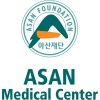
Low Dose IL-2, Hematopoietic Stem Cell Transplantation, IL2 for GVHD
Acute Lymphoblastic LeukemiaALL8 morePatients are being asked to participate in this study because treatment for their disease requires a stem cell transplant (SCT). Stem cells are the source of normal blood cells found in the bone marrow and lead to recovery of blood counts after bone marrow transplantation. With stem cell transplants, regardless of whether the donor is a full match to the patient or not, there is a risk of developing graft-versus-host disease (GVHD). GVHD is a serious and sometimes fatal side effect of SCT. GVHD occurs when the new donor stem cells (graft) recognizes that the body tissues of the patient (host) are different from those of the donor. When this happens, cells in the graft may attack the host organs. How much this happens and how severe the GVHD is depends on many things, including how different the donors cells are, the strength of the drugs given in preparation for the transplant, the quality of transplanted cells and the age of the person receiving the transplant. Typically, acute GVHD occurs in the first 100 days following transplant, while chronic GVHD occurs after day 100. Acute GVHD most often involves the skin, where it can cause anywhere from a mild rash to complete removal of skin; liver, where it can anywhere from a rise in liver function tests to liver failure; and the gut, where it can cause anywhere from mild diarrhea to profuse, life-threatening diarrhea. Most patients who develop GVHD experience a mild to moderate form, but some patients develop the severe, life-threatening form. Previous studies have shown that patients who receive SCT's can have a lower number of special T cells in their blood, called regulatory T cells, than people who have not received stem cell transplants. When regulatory T cells are low, there appears to be an increased rate of severe, acute GVHD. A drug known as IL-2 (Proleukin) has been shown to increase the number of regulatory T cells in patients following stem cell transplant, and in this study investigators plan to give low dose IL-2 after transplant. This study is called a phase II study because its major purpose is to find out whether using a low-dose of IL-2 will be effective in preventing acute GVHD. Other important purposes are to find out if this treatment helps the patient's immune system recover regulatory T cells faster after the transplant. This study will assess the safety and toxicity of low-dose IL-2 given to patients after transplantation and determine whether this drug is helpful in preventing GVHD.

Donor Stem Cell Transplant After Conditioning Therapy in Treating Patients With Hematologic Cancer,...
LeukemiaLymphoma5 moreRATIONALE: Giving chemotherapy before a donor stem cell transplant helps stop the growth of cancer or abnormal cells. It also helps stop the patient's immune system from rejecting the donor's stem cells. When the healthy stem cells from a donor are infused into the patient they may help the patient's bone marrow make stem cells, red blood cells, white blood cells, and platelets. Sometimes the transplanted cells from a donor can make an immune response against the body's normal cells. Giving cyclosporine and methotrexate before and after transplant may stop this from happening. PURPOSE: This clinical trial is studying the side effects and how well donor stem cell transplant works when given after conditioning therapy in treating patients with hematologic cancer, recurrent or metastatic solid tumor, or other disease.

A Phase I Study of MGCD0103 Given Twice Weekly in Patients With Leukemia or Myelodysplastic Syndromes...
LeukemiaMyelodysplastic SyndromesIn this study, MGCD0103, a new anticancer drug under investigation, is given twice weekly to patients with leukemia or myelodysplastic syndromes.

Rebeccamycin Analog in Treating Patients With Relapsed or Refractory Acute Myeloid Leukemia, Myelodysplastic...
Adult Acute Myeloid Leukemia With 11q23 (MLL) AbnormalitiesAdult Acute Myeloid Leukemia With Inv(16)(p13;q22)14 moreThis phase I trial is studying the side effects and best dose of rebeccamycin analog in treating patients with relapsed or refractory acute myeloid leukemia, myelodysplastic syndrome, acute lymphoblastic leukemia, or chronic myelogenous leukemia in blast phase. Drugs used in chemotherapy, such as rebeccamycin analog, work in different ways to stop cancer cells from dividing so they stop growing or die

Sunitinib in Treating Patients With Myelodysplastic Syndromes or Chronic Myelomonocytic Leukemia...
Chronic Myelomonocytic Leukemiade Novo Myelodysplastic Syndromes2 moreThis phase II trial is studying how well sunitinib works in treating patients with myelodysplastic syndromes or chronic myelomonocytic leukemia. Sunitinib may stop the growth of abnormal cells by blocking some of the enzymes needed for cell growth.

Haploidentical Donor Bone Marrow Transplant in Treating Patients With High-Risk Hematologic Cancer...
Accelerated Phase Chronic Myelogenous LeukemiaAdult Acute Lymphoblastic Leukemia in Remission95 moreThis phase II trial studies how well giving fludarabine phosphate, cyclophosphamide, tacrolimus, mycophenolate mofetil and total-body irradiation together with a donor bone marrow transplant works in treating patients with high-risk hematologic cancer. Giving low doses of chemotherapy, such as fludarabine phosphate and cyclophosphamide, and total-body irradiation before a donor bone marrow transplant helps stop the growth of cancer cells by stopping them from dividing or killing them. Giving cyclophosphamide after transplant may also stop the patient's immune system from rejecting the donor's bone marrow stem cells. The donated stem cells may replace the patient's immune system cells and help destroy any remaining cancer cells (graft-versus-tumor effect). Sometimes the transplanted cells from a donor can also make an immune response against the body's normal cells. Giving tacrolimus and mycophenolate mofetil after the transplant may stop this from happening

Donor Peripheral Stem Cell Transplant in Treating Patients With Myelodysplastic Syndrome, Acute...
Chronic Myeloproliferative DisordersLeukemia2 moreRATIONALE: Giving chemotherapy drugs before a donor peripheral blood stem cell transplant helps stop the growth of cancer and abnormal cells and helps stop the patient's immune system from rejecting the donor's stem cells. When the healthy stem cells from a donor are infused into the patient they may help the patient's bone marrow make stem cells, red blood cells, white blood cells, and platelets. Giving colony-stimulating factors, such as G-CSF, to the donor helps the stem cells move from the bone marrow to the blood so they can be collected and stored. PURPOSE: This phase I/II trial is studying how well donor peripheral stem cell transplant works in treating patients with myelodysplastic syndrome, acute myeloid leukemia, or myeloproliferative disorder.

VNP40101M in Treating Patients With Relapsed or Refractory Leukemia or Myelodysplastic Syndrome...
LeukemiaMyelodysplastic Syndromes1 moreRATIONALE: Drugs used in chemotherapy use different ways to stop cancer cells from dividing so they stop growing or die. PURPOSE: Phase I trial to study the effectiveness of VNP40101M in treating patients who have relapsed or refractory leukemia or myelodysplastic syndrome.

Doxercalciferol in Treating Patients With Myelodysplastic Syndrome or Chronic Myelomonocytic Leukemia...
LeukemiaMyelodysplastic Syndromes1 moreRATIONALE: Doxercalciferol may improve low blood cell counts and decrease the need for blood transfusions and may be an effective treatment for myelodysplastic syndrome or chronic myelomonocytic leukemia. PURPOSE: Phase II trial to study the effectiveness of doxercalciferol in treating patients who have myelodysplastic syndrome or chronic myelomonocytic leukemia.

NMA Allogeneic Hematopoietic Cell Transplant in Hematologic Cancer/Disorders
Chronic Myeloproliferative DisordersLeukemia6 moreRATIONALE: Giving low doses of chemotherapy before a donor peripheral blood stem cell transplant helps stop the growth of cancer cells. It also stops the patient's immune system from rejecting the donor's stem cells. The donated stem cells may replace the patient's immune system and help destroy any remaining cancer cells (graft-versus-tumor effect). Giving an infusion of the donor's T cells (donor lymphocyte infusion) after the transplant may help increase this effect. Sometimes the transplanted cells from a donor can also make an immune response against the body's normal cells. Giving immunosuppressive therapy before or after the transplant may stop this from happening. PURPOSE: This phase II trial is studying how well chemotherapy followed by donor peripheral stem cell transplant works in treating patients with hematologic cancer or aplastic anemia.
